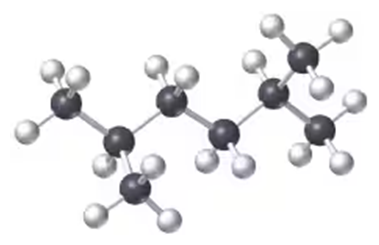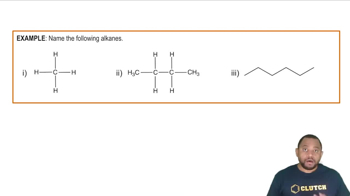Textbook Question
Give an example of a compound that meets the following descriptions:
b. A cycloalkane with three substituents

 Verified step by step guidance
Verified step by step guidance Verified video answer for a similar problem:
Verified video answer for a similar problem:



 2:26m
2:26mMaster Alkyl Groups Concept 1 with a bite sized video explanation from Jules
Start learning